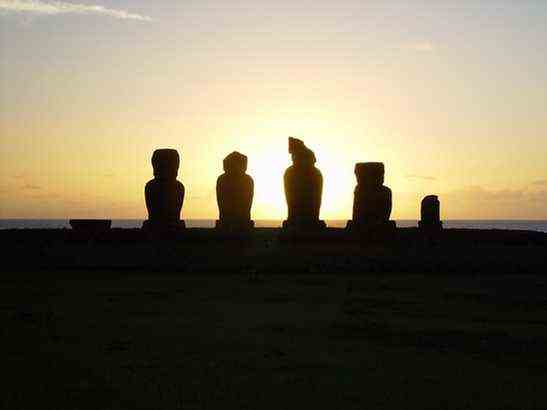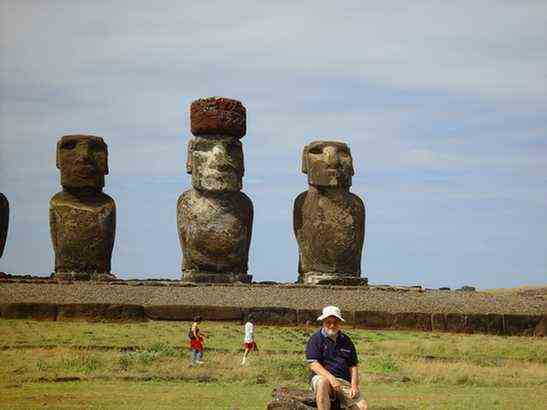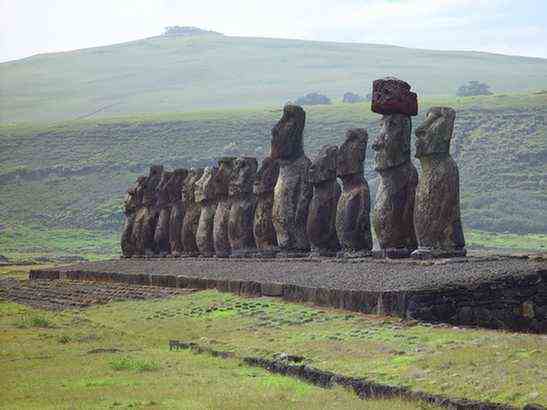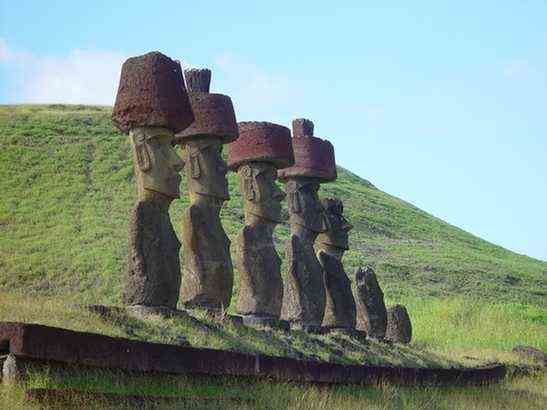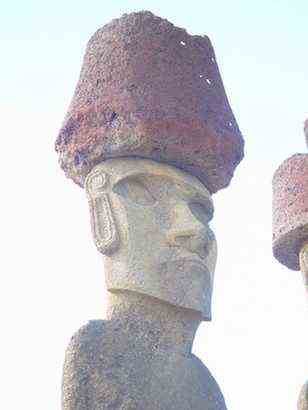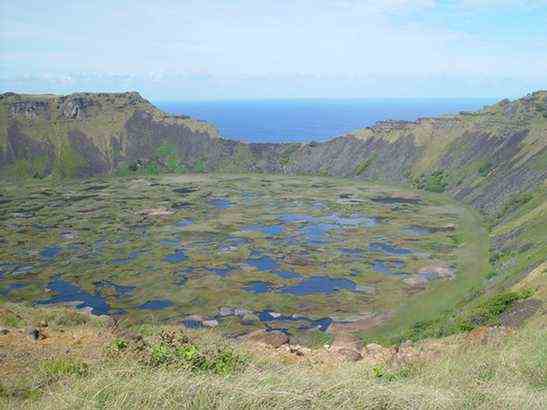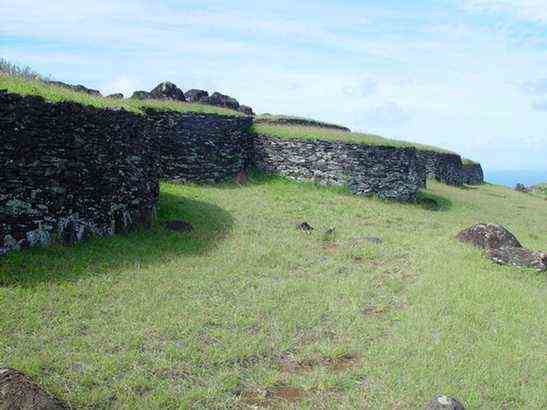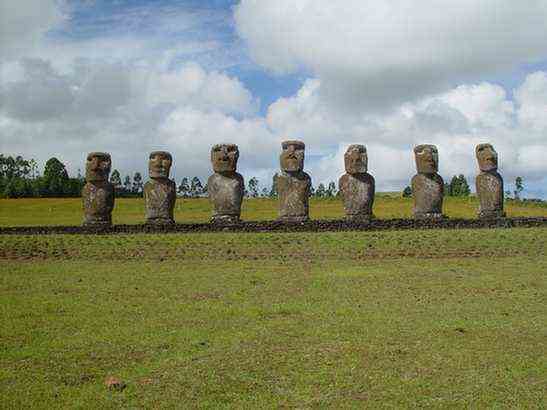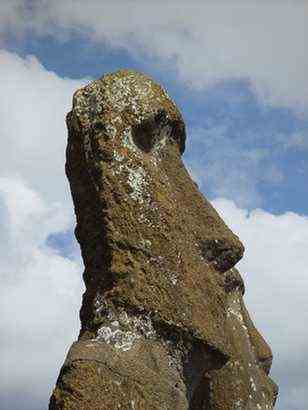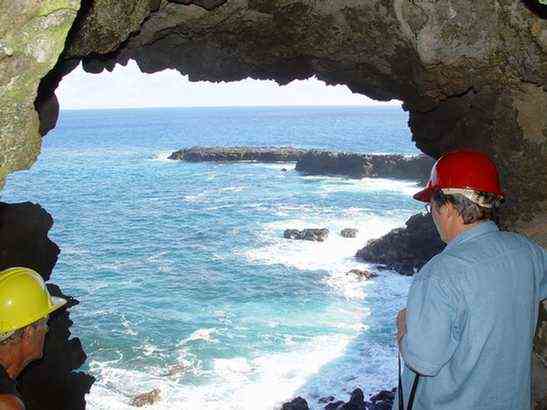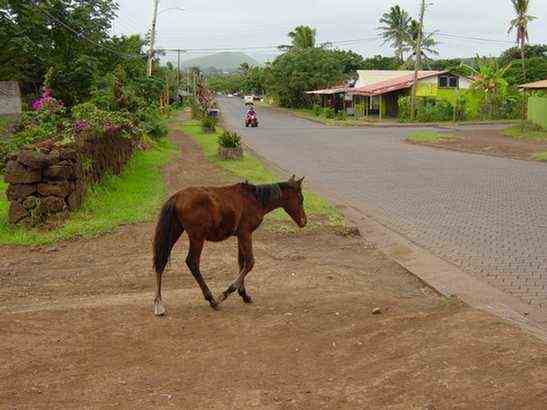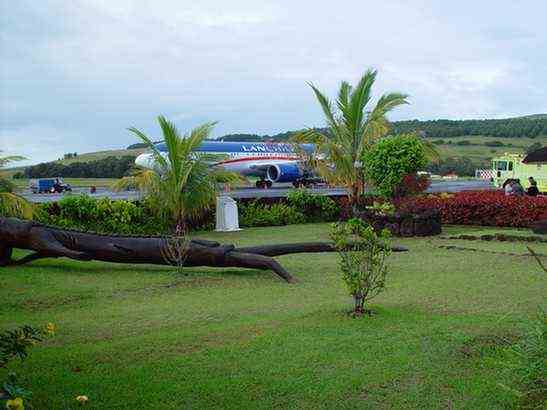|
|
Easter Island
The locals call it Rapa Nui, or Isla De Pascua or The Navel of the World. On Easter Day in 1722, Dutch admiral, Jacob Roggeveen arrived and renamed the island. |
|
|
The Moai were monuments to their kings, marking their burial places. They look inwards over their villages, so protecting their people. The platforms on which the Moai are mounted are called Ahu. There are over 300 monuments in various states of repair and ruin scattered all over the 22 X 5 km island. |
|
|
The platforms are made of bassalt, the main body of the Moai is carved from volcanic ash and the top knots (Pukao) from scoria. All three rocks came from different parts of the island. |
|
|
The most accepted theory is that the original inhabitants arrived from Tahiti between 400 and 500AD. The Polynesians were fantastic navigators and because of decreasing food supplies on their own islands, they made many trips to find new places to live, populating the triangle - Hawaii, New Zealand and Rapa Nui. |
|
|
Roggeveen, in 1722, noted that the islanders were healthy and had intensively cultivated gardens. When Cook arrived in 1774, he found the people poor, timid and miserable, and noted that many Moai had been damaged and fallen. |
|
|
After a number of migrations, two civilizations formed, the Long Ears of the east and the Short Ears of the west. Both clans built Moai and Ahu. |
|
|
The population probably peaked at around 15,000 in the late 17th century. Conflicts between these 2 clans, possibly over dwindling resources, nearly exterminated the Long Ears. It is believed that during these conflicts rival Moai were toppled.
|
|
|
Rano Kau volcano
350 metres high, the caldera lake is more than a kilometre in circumference and 280 m deep. |
|
|
We visited Easter Island on our 2004 around the world trip.
We flew in from Tahiti on April 22nd for 4 nights and then on to Santiago in Chile. |
|
|
Orongo ceremonial village.
The rounded buildings of drystone walls built into the sides of the cliff were used during the bird cult rituals. |
|
|
These 7 Moai in the centre of the island represent the original 7 explorers who the Polynesian king, Hota Matu'a, sent to search for a new land. These Moai were the first to be scientifically restored (1960/61) and look out to Polynesia from where they came. |
|
|
|
|
|
Great ocean views from the cave at the end of a lava tube. |
|
|
The main street of Hanga Roa, the main township on Easter Island. Very much like a frontier town, it reminded us of Thursday Island. |
|
|
The runway on Easter Island was strengthened and lengthened so that the USA space shuttles could use it in an emergency.
We loved Easter Island. The local people were very friendly. |

